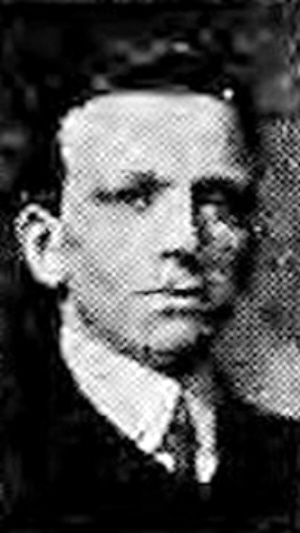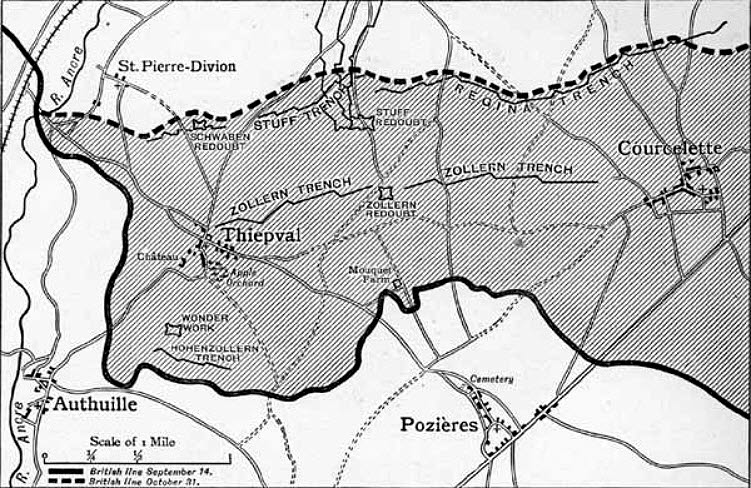
Walter Reynolds was born in Wakefield in the Spring of 1882, the second child and first son of Henry Reynolds and his wife, Clarissa (nee Dickinson) who married in Summer 1877. The couple had eight children.
In 1891, Henry Reynolds, wife Clarissa and four of their children, including 9 year-old Walter, were living at Stanley, near Wakefield, where Henry was working as a plasterer’s labourer. In the late 1890s the family moved to Ossett, and by 1901 they were living on Intake Lane, Ossett, but at that time, Walter was not living with them.
Walter Reynolds, aged 18, had joined the York and Lancaster Regiment by this time and was stationed at Tanshelf Barracks in Pontefract. He was posted to India in February 1902 and returned to England in February 1909.
The 6th (Service) Battalion of the York and Lancaster Regiment was formed at Pontefract in August 1914 as part of K1 and became part of 32nd Brigade in 11th (Northern) Division. They moved initially to Grantham and then to Witley in April 1915. On the 3rd July 1915, the Battalion sailed from Liverpool for Gallipoli, landing at Suvla Bay on the 6th August 1915. They were evacuated from Gallipoli in December 1915, and moved to Egypt via Imbros. The formation moved to France in July 1916 and fought in the Battle of the Somme.
Walter Reynolds married Amy Norton at the Ebenezer Chapel, Dewsbury on the 12th July 1910 and their first child, Cynthia Reynolds, was born on the 17th March 1911. At this time, the couple were living in Batley, where Walter was the ‘town postman’. They had a second child, Henry Reynolds, born in Batley on the 30th July 1913.
At the age of 18 years, Walter Reynolds first enlisted in the army in September 1900 with the service number 6442. He joined the York and Lancaster Regiment and in March 1904, extended his period of service for another four years. Reynolds was appointed Lance-Corporal in March 1907. During the period 1902 to 1909 he was posted to India, and on his return in February 1909, he was transferred to the army reserve for a further four years. On the 26th February 1913, Walter Reynolds re-engaged in the army and maintained his rank as a Lance-Corporal.
As a consequently, he was in army reserve at the time of the declaration of war on the 4th August 1914. He was mobilised at Pontefract on the 6th August 1914, but he was “at home” until 19th September 1915 and embarked for the Mediterranean (Gallipoli) on the following day, arriving there on the 29th September 1915. He moved to France on the 27th June 1916 and was killed in action three months later on the 29th September 1916. Walter Reynolds had completed almost 16 years in army service at the time of his death.
Sergeant Walter Reynolds was posthumously awarded the British and Victory medals and also the 1914/15 Star for his service overseas before 31st December 1915.
This short obituary for Walter Reynolds in the “Batley News” (courtesy of Val Mitchell) provides a bit more information about Walter’s army service and the nature of his death:
“Batley Postman’s Death – Knocked Out by a Shell in a Successful Attack on German Trenches – Sergt. Walter Reynolds, of Clarence Street, Batley was killed by a shell on September 30th during a successful attack by his Battalion on a German trench, and a letter of sympathy received by his wife states that his work was very highly thought of by his officers who are very sorry to lose him. “I hope your pride in his death will somewhat soften your grief.” writes one of the officers to Mrs. Reynolds.
Sergeant Reynolds, who belonged to the Yorks and Lancs Regiment, was a native of Wakefield, but resided for a few years in Ossett, where his parents live. He enlisted in 1890, served eight years in India, and coming to Batley as a Reservist worked here as a postman for seven years. Called up on mobilisation day in August 1914, he was sent to Sunderland, where he served as a drill sergeant for thirteen months. He was sent to the Dardanelles, and after evacuation he served in Egypt before going to France.”
Walter Reynolds was killed on the 29th September 1916 during the bitter fighting at the Battle of Thiepval Ridge, which took place between the 26th and 30th September 1916. The 11th (Northern) Division attacked on the 27th September, bringing Sergeant Reynold’s 32nd Brigade out of the reserve, and got a footing in the Stuff Redoubt, but were unable to take the German strongpoint completely. Over the remaining three days of the battle, the fighting raged around the Stuff and Schwaben Redoubts. On the 30th September 1916, the 11th Division resumed the attack on Stuff Redoubt at 4:00 p.m. with bombing parties advancing west along Hessian Trench and along Zollern Trench, which by nightfall had taken the southern half of the redoubt. At the end of the battle the British had reached the line of their final objective, but were unable to clear out the two redoubts. In the end they would fall during the battle of the Ancre Heights in early October 1916.

Above: Map showing the German strongholds of the Schwaben and Stuff Redoubts, near Thiepval.
Sergeant Walter Reynolds, aged 34 years, son of Henry and Clarissa Reynolds, of 2, Blue Butts, West Wells, Ossett; husband of Amy Reynolds, of 17, Springfield Terrace, Dodworth Road, Barnsley, died on the 30th September 1916. He is remembered on Pier and Face 14A and 14B at the Thiepval Memorial,1 Somme, France. The Thiepval Memorial will be found on the D73, next to the village of Thiepval, off the main Bapaume to Albert road (D929).
On 1 July 1916, supported by a French attack to the south, thirteen divisions of Commonwealth forces launched an offensive on a line from north of Gommecourt to Maricourt. Despite a preliminary bombardment lasting seven days, the German defences were barely touched and the attack met unexpectedly fierce resistance. Losses were catastrophic and with only minimal advances on the southern flank, the initial attack was a failure. In the following weeks, huge resources of manpower and equipment were deployed in an attempt to exploit the modest successes of the first day. However, the German Army resisted tenaciously and repeated attacks and counter attacks meant a major battle for every village, copse and farmhouse gained. At the end of September, Thiepval was finally captured. The village had been an original objective of 1 July. Attacks north and east continued throughout October and into November in increasingly difficult weather conditions. The Battle of the Somme finally ended on 18 November with the onset of winter.
In the spring of 1917, the German forces fell back to their newly prepared defences, the Hindenburg Line, and there were no further significant engagements in the Somme sector until the Germans mounted their major offensive in March 1918.
The Thiepval Memorial, the Memorial to the Missing of the Somme, bears the names of more than 72,000 officers and men of the United Kingdom and South African forces who died in the Somme sector before 20 March 1918 and have no known grave. Over 90% of those commemorated died between July and November 1916. The memorial also serves as an Anglo-French Battle Memorial in recognition of the joint nature of the 1916 offensive and a small cemetery containing equal numbers of Commonwealth and French graves lies at the foot of the memorial.
The memorial, designed by Sir Edwin Lutyens, was built between 1928 and 1932 and unveiled by the Prince of Wales, in the presence of the President of France, on 1 August 1932 (originally scheduled for 16 May but due to the death of French President Doumer the ceremony was postponed until August).
The dead of other Commonwealth countries, who died on the Somme and have no known graves, are commemorated on national memorials elsewhere.
References: